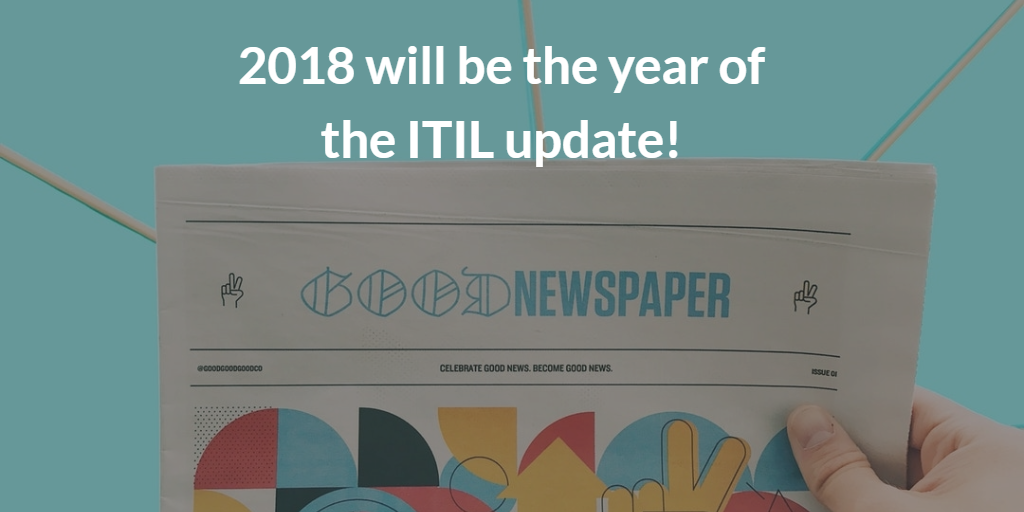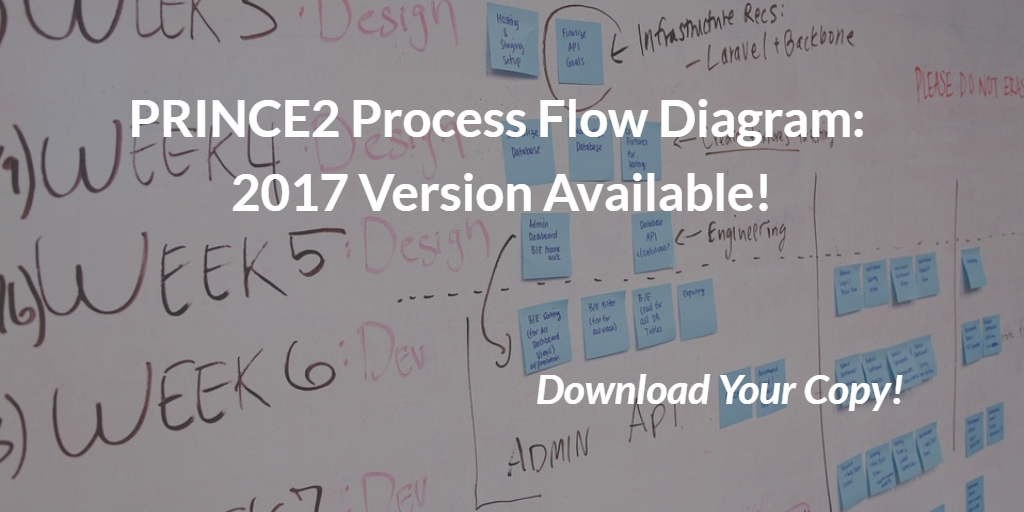News
View the latest inspiring and positive news and information about what's going on in the PM and IT world.

At QRP International we are committed to provide the best quality of training as well as the broadest offer, to make sure we can answer to our customers' needs.
This is what we kept in mind when working to prepare the new 2018 training calendar, now available at this link to be checked out: find out all upcoming dates for your Project, Programme, Portfolio, PMO, IT and Change Management training!
OUR TRAINING OFFER
As ATO (Accredited Training Organization) QRP Internationals offers the full range of Project, Programme, Portfolio, PMO and Change Management accredited training:
- Project Management: PRINCE2, AgilePM, PRINCE2 Agile, PMP
- Programme Management: MSP
- Portfolio Management: MoP
- PMO Management: P3O
- Change Management: Change Management
- IT Service Management: ITIL
NEED TO TRAIN YOUR TEAM?
Looking for an easy and efficient solution to train your team of colleagues, or department? Get in touch to discover our in-house, tailored and customized solutions!

A big news was released few days ago by Axelos, the joint venture company, created in 2013 by the Cabinet Office, and owner of ITIL.
"Over the last 18 months we have embarked on a programme of extensive research (30+ global workshops engaging with over 300 partners, professionals and SMEs so far), and we recognise that this update cannot be done without the cooperation and input from our valued partner network. We are keen to work with you all to ensure that the new guidance will support you and your customers."
What we know so far about the ITIL Update:
- The core elements of ITIL will remain and will continue to derive from the experiences of thousands of specialists and experts. Research has confirmed that ITIL remains best practice for the ITSM industry.
- The Update will include practical guidance on how ITIL is adopted in conjunction with practices such as DevOps, Agile and Lean.
- Individuals who have already certified will have their current certifications recognised in the new scheme.
A COMMUNITY-LED INITIATIVE: GET INVOLVED!
Axelos actively encourages practitioners to provide insight and feedback to directly influence the update via the Global Research Programme. Currently more than 650 members have signed up to the programme. Sign up too!

- Auditory learning: learning through listening and hearing. The expert trainer explains the matter, focusing on the most important parts of the Project Management methodology, highlighting tools and techniques.
- Visual learning: in order to better understand the ideas and concepts, drawings on flip charts can be an important tool to integrate new information. If we take the example of a PRINCE2 training, imagine what impact could have a drawing that explains you the difference between outputs, business change, outcomes and benefits. A picture says more then a thousand words. In some cases, you will even see that these drawings are put on the walls in the training room and are continuously used by the trainer when he/she comes back to this topic.
- Kinesthetic learning: this is what we call “learning by doing”. Classrooms are ideal places to exercise on how to put the theory into practice. Let's take the example of an AgilePM training: an important tool is the PRL (Prioritized Requirements List). What better way to understand how to create this list then to do this in group during the course? It’s a first-hand experience that will help you to put it into practice when you’re back in the office.

- Project managers: anyone who is applying PRINCE2 at work would benefit from having a clear and graphic overview of the method.
- Course delegates: QRP International provides an A3 Process Map version as part of the training material during our courses, both classroom and distance learning.
PRINCE2 2017: a Renewed Process Map, updated to NEW Version
PRINCE2 is firmly established as the world’s most practiced method for project management and is globally recognized for delivering successful projects. In July 2017 AXELOS released the first major update to PRINCE2 since 2009, with the 2017 version of the method: this brings along a new PRINCE2 guidance and new Foundation and Practitioner examinations. The 2017 update of PRINCE2 builds on the proven strength of PRINCE2, so the following key elements remain unchanged:- 7 Processes forming the project management
- 7 Principles forming the basis of good method of managing projects
- 7 Themes, knowledge areas which support specific key areas of project management
Download your version!
Our PRINCE2 Process Map is available for download: don't miss this chance!
More on PRINCE2: Literature, Articles and Case Studies
QRP International has a full selection of recommended reading for professional qualifications: check out our Literature page to stay up to date with the latest publications on Project, Programme, Portfolio and Change Management. Furthermore, our commitment is to share with the community practical cases and real life scenarios about the methods, as well as white papers that illustrate the features of each Best Practice: check out our Articles & Case Studies page to find valuable content, easy to download!
- The “Future of Project Management Professional” report from Axelos identifies the key trends that will impact the project, programme and portfolio management profession, and refers to Democratization of Project Management: “76% of project managers believe project management will become a basic business skill.” This means that Project management will more and more become a basic business skill: every aspect of our roles can be considered in terms of project managing and delivering. “Project management will be used widely by individuals across the whole organization and will be seen as a valuable business skill. This democratization of project management will only enhance the value of project managers, setting them apart as professionals as they evolve their roles to be more strategic and effect change within the business.”
- The “Axelos 2017 PPM Benchmarking Report” has the interesting and insightful title “The value of Project Management Excellence”. This research has identified a lot of challenges facing project managers, but there were also some positive findings too, especially around ongoing development. Continuing professional development (CPD) an activity that is commonly associated across professions such as accountancy, medicine and law and that, however, the majority of project managers recognize as very important for the continuous improvement. The only thing that could hold them back is a lack of investment from organizations; but, if you delve deeper, both individuals and organizations are on the same page: individuals want to do their job more effectively and organizations want to improve the effectiveness of their teams.
3 Webinars to Guide you through Programme, Portfolio and PMO management
PROGRAMME MANAGEMENT ELEMENTS AND BENEFITS In you are managing bigger-and-bigger projects and driving transformational business change, your next step is Programme Management. MSP, Managing Successful Programmes, represents proven good practice in programme management in successfully delivering transformational change, drawn from the experiences of both public and private sector organisations. MSP defines programme management as “the action of carrying out the coordinated organization, direction and implementation of a dossier of projects and transformational activities (i.e. the programme), to achieve outcomes and realize benefits of strategic importance to the business”. In fact it’s key to understand that a programme is not only a “bigger project”, but can also be a set of coordinated projects. PORTFOLIO MANAGEMENT: BENEFITS OF STRATEGIC ALIGNMENT If you are a manager with a top-down perspective (you are managing a budget and a team, or a group of strategic initiatives), your next step could be MoP Portfolio Management, a one week training with certification. MoP, Management of Portfolios, provides an overview of all change activities including what is in the portfolio, what it is costing, what risks are faced, what progress is being made, and what the impact is on business as usual and the organization’s strategic objectives. MoP helps you answer the question “Are we doing the right projects?” by prioritizing the right projects and programmes to undertake. INTRODUCTION TO PMO MANAGEMENT: ROLES, TECHNIQUES AND BENEFITS If your focus is on improving the way that projects are done (so that more projects succeed and change is more effective), then you should consider P3O, which explains how to use offices to support projects, programs and portfolios. You can facilitate effective portfolio, programme and project management in your organization by implementing a PMO Office. This may be provided through a single permanent office which may exist under several different names e.g. PMO, Portfolio Office, Centre of Excellence, Enterprise or Corporate Programme Office. It may otherwise be provided through a linked set of offices (portfolio office, programme offices, project offices), both permanent (enabling/supporting business objectives and consistency of delivery) and temporary (enabling/supporting specific programmes and projects), providing a mix of central and localized services.
Today’s project management pressures
Project managers (and the projects they’re responsible for) are not immune to the effects of a changing global economy. In fact, the majority of project managers acknowledge that there is increased business competition which is causing a variety of knock-on effects. Some findings:- 76% states that “The business environment has become more competitive”
- 74% states that “Budgets and timelines are tighter as clients/ stakeholders look for more value from projects”
- 65% states that “PMs are expected to deliver more projects over a shorter time frame”
Project management maturity within organizations
The maturity of project management in many organizations is still behind where it needs to be to meet the increased demands of more projects within existing timeframes and budgets. One measure of maturity can come from the P3M3 Maturity Model, yet:- less than 20% of organizations described themselves as having established processes in place, with ongoing improvements based on monitoring and feedback
- only 53% of project managers describe the project management function as “influential”
The challenges faced by project managers today
At the head of the list of the challenges faced by PMs today there is “over-ambitious timeframes” for projects, followed closely by “changing project briefs and moving expectations”. In the context of increasing project numbers to deliver in the same timeframe or less, plus the relative isolation of the PMO in organizations, these are serious challenges for project managers. Following in the list there are also challenges like “poor communication”, “absence of the right people for the job”, “unrealistic budgets” and “inefficient work practices”.- Half of project managers felt their project didn’t have the right people in place, which led to project failure in 43% of cases
- 56% of project managers had witnessed significant changes to the project brief and expectations and this led to project failure in 48% of cases
Agile
Agile continues to be a hot topic within project management. There is a huge appetite amongst project managers for agile techniques, yet this enthusiasm isn’t apparent at an organizational level. Why are so many organizations wary about adopting agile? It could be due to a lack of understanding as ‘agile’ is still perceived as the latest buzzword. Project managers need to educate the business about the value of agile to help deliver the number of projects that organizations are now demanding. Organizations need to get on board with adopting agile techniques. Working in an agile way allows project managers to respond to evolving business needs but still the appetite for adoption at an organizational level is low.- 77% of respondents seeing value in working in a more agile way and just 2% seeing no value in it
- Less than half (46%) of respondents said there is significant appetite for adopting agile techniques within their function and this falls further to 39% at an organizational level







